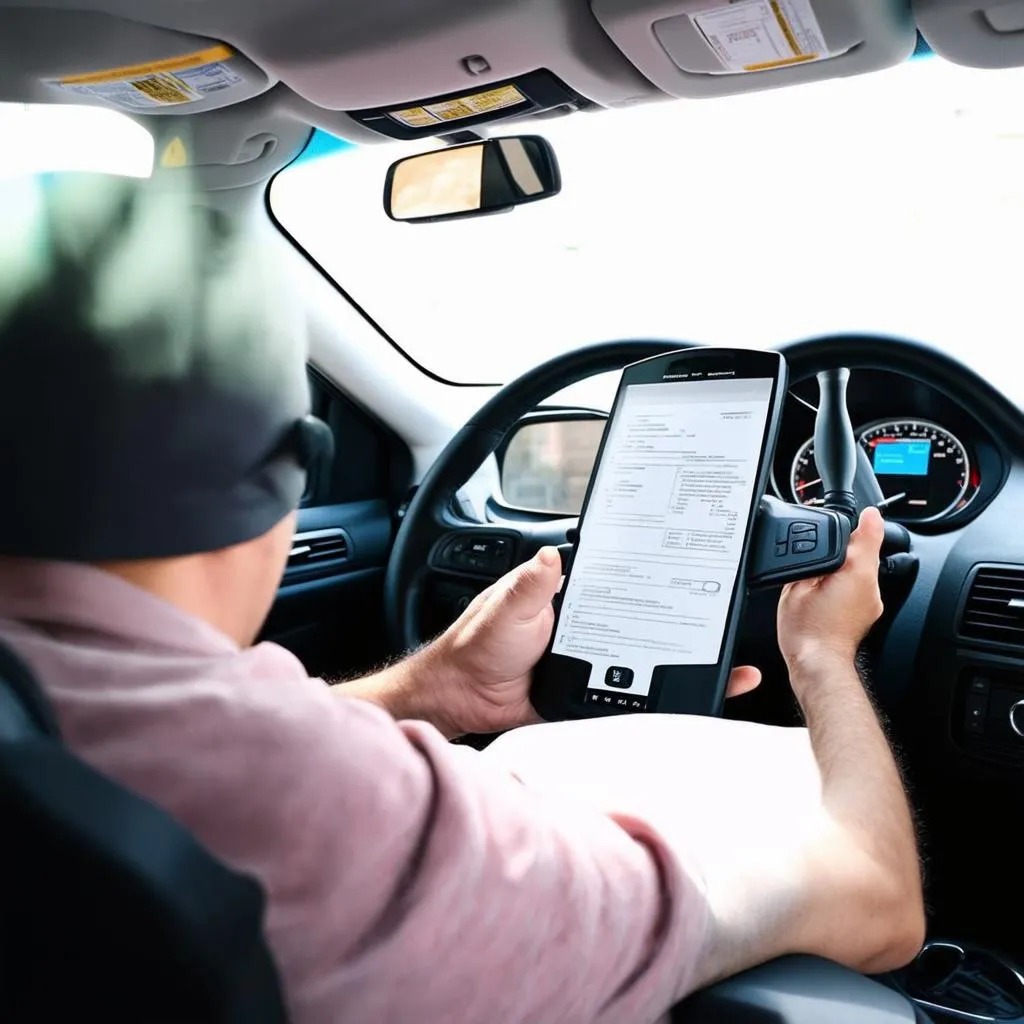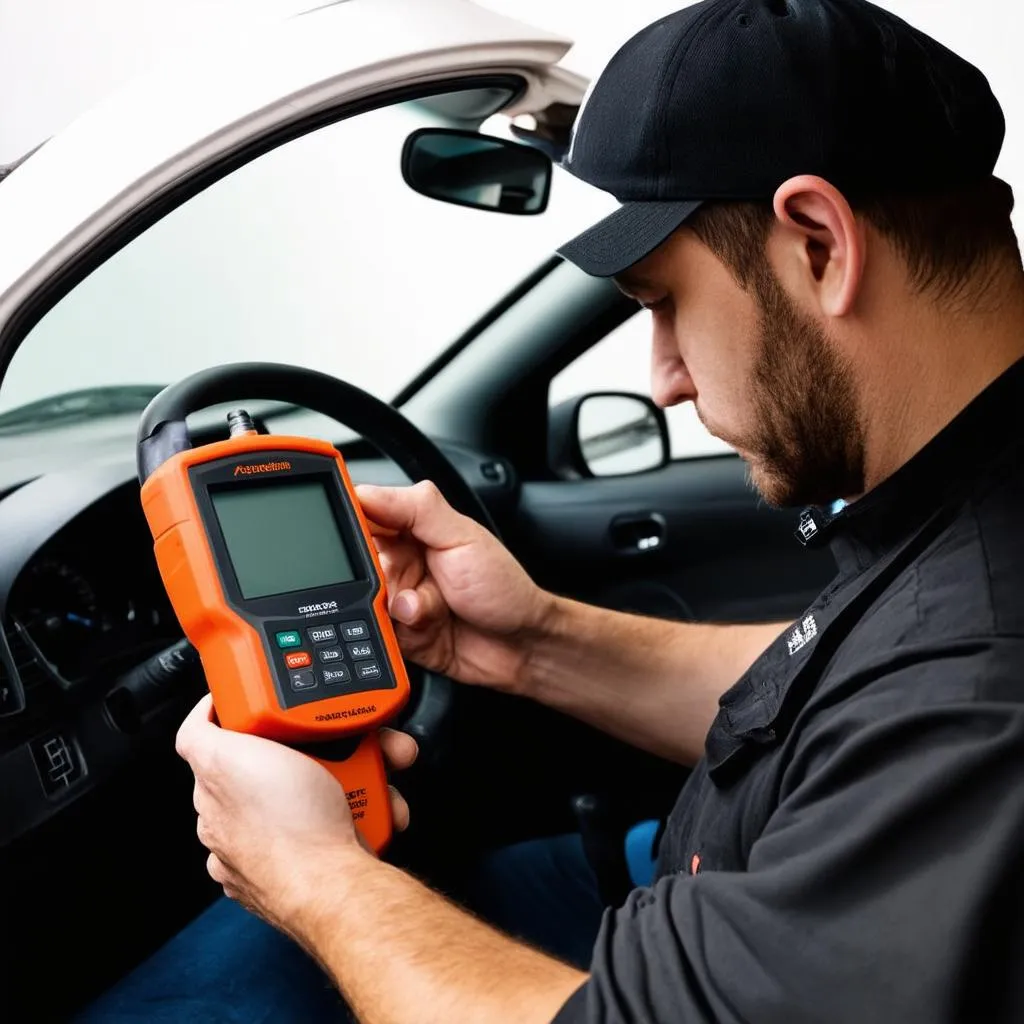Have you ever felt like your car was trying to tell you something? Maybe it’s sputtering, making strange noises, or just not running as smoothly as it used to. Well, it might be! Cars, much like humans, have ways of communicating their needs and problems. One way they do this is through a series of codes stored in the onboard diagnostics (OBD) system. Today we’re going to delve into the fascinating world of “Reading Obd Ii Codes,” a skill that can help you understand your car’s cryptic messages and even help you save money on repairs.
What is OBD II and Why Should You Care?
OBD II, or On-Board Diagnostics II, is a standardized system for monitoring your car’s performance. It’s like a little black box that keeps track of your car’s vitals, recording any issues or malfunctions that might occur. Imagine it as a built-in doctor for your car, providing insights into its health and any potential problems.
This system was first introduced in 1996 for all cars and light trucks sold in the United States. Now, nearly every car on the road comes equipped with it.
But why should you care? Well, understanding OBD II codes can be invaluable in several ways:
- Early Detection of Issues: By reading these codes, you can identify problems with your car before they escalate into major issues, potentially saving you time, money, and headaches in the long run.
- Empowering Yourself: Being able to decipher your car’s codes allows you to take control of your vehicle’s maintenance. You can be more proactive in addressing problems instead of waiting for them to become major and costly repairs.
- Saving Money: Catching problems early can help you avoid expensive repair bills. In many cases, simple fixes, such as replacing a sensor or tightening a loose connection, can be performed at home, saving you the cost of a mechanic.
- Negotiating with Mechanics: Knowing the codes can help you confidently communicate with mechanics, understand the problem, and negotiate a fair price for repairs.
Reading the Codes: A User-Friendly Guide
OBD II codes are like a language that your car uses to communicate with you. To understand this language, you’ll need an OBD II scanner. These devices, often resembling a small smartphone, can be purchased online or at many auto parts stores for a reasonable price.
To use an OBD II scanner, simply plug it into the diagnostic port (usually located beneath the dashboard). The scanner will then retrieve the codes stored in your car’s onboard diagnostics system.
Now, these codes aren’t just random numbers and letters – they are designed to help you pinpoint the issue. Each code represents a specific problem or malfunction. For example:
- P0171: System Too Lean (Bank 1)
- P0300: Random/Multiple Cylinder Misfire Detected
- P0420: Catalyst System Efficiency Below Threshold (Bank 1)
Don’t be intimidated by these codes – there are online resources and mobile apps that can help you decipher their meaning. Websites like OBD-Codes.com or apps like Torque Pro can provide detailed explanations of each code and possible solutions.
Common Questions About Reading Obd Ii Codes
Here are some of the most common questions people ask about reading OBD II codes:
1. “Can I read the codes myself, or do I need to take my car to a mechanic?”
Absolutely! OBD II scanners are affordable and easy to use, making it a DIY project. While mechanics have specialized knowledge, many people find that they can read codes and even diagnose problems themselves with the help of online resources and apps.
2. “What does it mean if my check engine light is on?”
A check engine light can indicate a wide range of issues, from a minor problem to a serious malfunction. Don’t panic! Simply use your OBD II scanner to read the code(s) that are triggering the light. This will provide valuable information about the potential issue.
3. “My scanner shows a code but my car is running fine. Should I be concerned?”
Sometimes codes can be triggered by minor issues that don’t necessarily affect the car’s performance. However, it’s always a good idea to address codes, even if your car seems to be running fine. This can help prevent future problems from developing.
4. “Can I erase the codes myself?”
Yes, most OBD II scanners have an option to clear codes. However, it’s important to remember that erasing the code does not fix the problem. It simply turns off the check engine light. The underlying issue still needs to be addressed.
5. “Can I read codes on any car?”
OBD II is a standardized system, so you can use your OBD II scanner on any car made after 1996.
6. “How often should I read the codes?”
While it’s not necessary to read codes every day, it’s a good idea to check them periodically, especially if you notice any changes in your car’s performance. It can be a good practice to scan for codes every few months, or before a long road trip.
OBD II: A Bridge Between You and Your Car
The OBD II system is more than just a diagnostic tool – it’s a bridge between you and your car. It offers valuable information about your vehicle’s health and can empower you to take better care of it.
 OBD II Scanner Use
OBD II Scanner Use
The Spiritual Side of Car Care
Some people believe that cars are more than just machines – they are extensions of ourselves, reflecting our energy and intentions. In this sense, understanding OBD II codes can be seen as a way of tuning into your car’s energetic needs and addressing any imbalances. Think of it like an ancient ritual of understanding the whispers of your own soul through the language of your car.
Ready to Dive Deeper?
This is just the tip of the iceberg when it comes to the world of OBD II codes. There’s a whole universe of information and resources available to help you become a pro at decoding your car’s secrets.
For more information, check out these related articles on our website:
If you’re ever struggling to read a code, need help diagnosing a problem, or just have a question about your car’s health, don’t hesitate to contact us! We’re here to help you on your journey to becoming a car guru. You can reach us on Whatsapp: +84767531508.
 OBD II Code Troubleshooting
OBD II Code Troubleshooting
Let’s keep our cars running smoothly and joyfully for years to come!